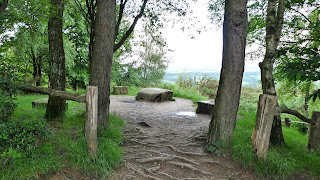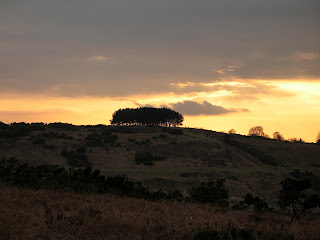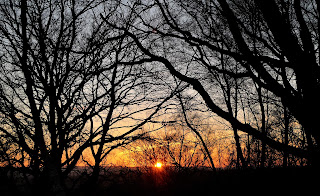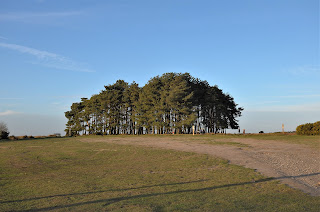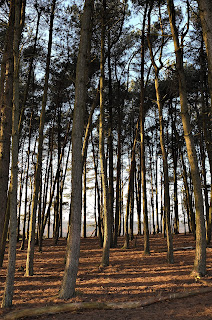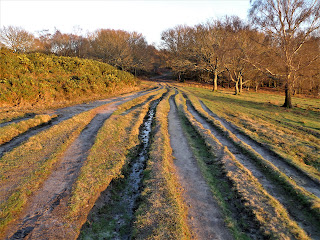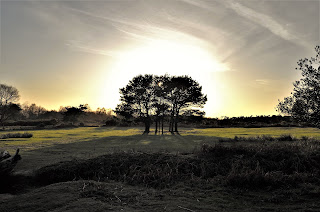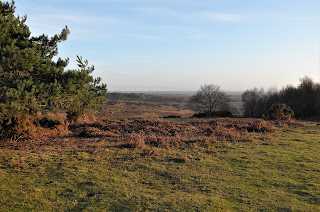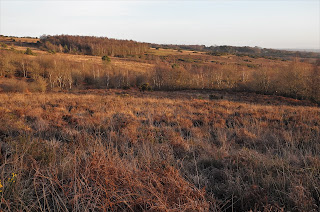I've seen most parts of England, Wales and Scotland by now, and still think that as an all-round likeable place Sussex is hard to beat. It's got plenty of towns large and small, some of them very historic. It's got shops. It's got museums. It's got galleries. It's got some magnificent National Trust properties. Not that I want them, it's got theatres too. If you like getting out and around in retirement, it's one of the best counties I know.
Strangely, the rest of the country isn't greatly aware of Sussex. Or they think Brighton (aka London-on-Sea) is Sussex, and that the county has nothing else to show. It is true that coastal Sussex is largely a string of built-up beach resorts, one or two of them smart, many of them dull, and none of them rivalling the picturesque resorts of Devon and Cornwall and elsewhere. But they are all different from Brighton. And all share the same gorgeous sunsets, for all the Sussex coastline faces the English Channel.
'Sussex by the sea' is rather a cliché, but nevertheless the county is sea-orientated, and looks south, and does not look northwards to London. Thousands commute daily to the capital, of course; but, if not of working age, it's very easy to forget that London exists. The Big City's pull is weak compared to that felt by the poor souls who live in Surrey and Kent. And what happens in London has no bearing on what happens in Sussex. Sussex goes its own way. And Sussex won't be druv, as the saying goes.
I love the Sussex coast. I also love the Sussex countryside, and there is an astonishing amount of it to enjoy. However, I would be the first to admit that Sussex doesn't have everything. It has the South Downs, but no mountains. It has the sea, but no large natural lakes. It is very well wooded in parts, but there is no proper forest, like Hampshire has the New Forest.
And it has no proper moorland. The nearest equivalent is an upland area in the centre of the county called Ashdown Forest. It's pretty small - say six miles by six miles. It's undulating heathland: ferns, bracken, little woods, lots of gorse, and some sandy or muddy tracks. There's enough space to avoid meeting another person, but other people are never totally out of sight. There are certainly wild animals and birds, and there may be cattle and other larger animals too, although I never seem to see any wandering around, like you might commonly see ponies and cows in the New Forest, or on Dartmoor, although at night deer abound and may cross the road as you drive along - and need watching out for.
All this said, it's a pleasant place for a rough ramble, although one might cover most of Ashdown Forest in a few hours' walking. There are very few 'tourist sights', and none of them are truly compelling. There's a nice windmill - a rare post-mill, I think - near Nutley:
A A Milne made Ashdown Forest the setting for the bear Winnie-the-Pooh. At Gill's Lap, a high point with a great view, is a memorial to this:
I can't say that Winnie-the-Pooh played any role in my childhood life. I was more for Beatrix Potter and her creations - until I discovered Dad's growing collection of James Bond books. Suddenly I was far more interested in spies and exotic locations and what Bond liked about his women than the unlikely antics of animals that wore clothes and could talk.
And there's the Airman's Grave, really just a memorial rather then an actual burial-place:
But that's about it. The main attraction is the heathland itself, and the beauty of the views, which, to the south, extend as far as the South Downs.
There is one distinctive feature, however, that Ashdown Forest possesses: its 'clumps'. These are small circular groves of tall trees on the tops of hills. They form little landmarks, as well as providing some kind of shelter within for deer and other animals, although they generally lack any undergrowth and on the whole are rather draughty! These clumps are very characteristic of Ashdown Forest, and have become iconic, appearing on posters for instance - such as this one I saw at Crowborough station:
I would say the real trees are typically darker, and more densely planted, than the poster above suggests. But they do indeed sit on hilltops, and I have pictures in my Photo Archive which bring that out, such as this one:
The sky is a big part of the appeal of Ashdown Forest. The place is wide open to the heavens, and clouds are common, and - especially at sunset - the combination of trees, the horizon, bands of cloud, and the setting sun often create a moody, brooding atmosphere.
One of the clumps is called Friends Clump. I went to see it yesterday.
It was very breezy! I didn't linger. I wanted to have a walk south of Friends Clump before the sun set. This being late January, the heathland wasn't very colourful. I have seen it looking like this is the past, although usually with colours warmed by late-afternoon sunshine:
Still, yesterday's heathland had a certain understated beauty, livened up here and there with bright yellow gorse flowers:
I wanted to venture down there, perhaps finding a way to the Airman's Grave, but it was very rough underfoot, and the ground very soft in places, and (stupidly) I'd left my stick in Fiona. Although adequately booted, I decided not to risk it. Instead, I returned to higher, drier ground and explored the photographic possibilities of the setting sun.
Ashdown Forest is a cheerless place in winter, once the sun has gone down. I could see Friends Clump not far off and headed back to where I'd left Fiona. It was quite dark when I got home.
I'll have to go back. There are plenty of good walks just off the main heathland. Something for the spring then.



